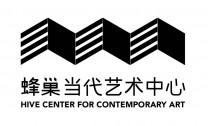- 资质:诚 艺
- 评分:
1分 2分 3分 4分 5分 6分 7分 8分 9分 10分 8.4分
- 印象:
- 经营时间:17年
- 展厅面积:
- 地 区:北京-朝阳
不在此山中:王伊楚个展
- 展览时间:2018-07-21 - 2018-08-25
- 展览城市:北京-朝阳
- 展览地点:蜂巢(北京)当代艺术中心 北京市酒仙桥路4号798艺术区E06
- 策 展 人:于非
- 参展人员:
展览介绍
不在此山中:王伊楚个展
Out of the Mountain: Wang Yichu Solo Exhibition
新闻稿
Press Release
艺术家| Artist: 王伊楚| Wang Yichu
策展人|Curator: 于非| Yu Fei
开幕时间 | Opening: 2018.7.21 16:00
展览时间 | Exhibition Dates: 2018.7.21-8.25
地点|Venue:
蜂巢(北京)当代艺术中心|Hive Center for Contemporary Art (Beijing)
地址|Add.
北京市酒仙桥路4号798艺术区E06 |
E06, 798 Art District, Chaoyang District, Beijing, China
蜂巢(北京)当代艺术中心将于2018年7月21日至8月25日在B展厅推出“不在此山中:王伊楚个展”。 本次展览由蜂巢青年策展人于非策划,将呈现艺术家王伊楚自2007年以来的纸本绘画作品,旨在体现艺术家十年来所延续的美学线索,并且标注其在创作上的多次微妙转向。生于上世纪七十年代的王伊楚,于九十年代后期从音乐专业折返到绘画的创作中,在家学的影响下先是承袭了西方现代主义艺术的风格,而后专注于从传统文化中提取并转译出概念化的抽象符号,形成画面中兼容并蓄的形式构成。王伊楚的作品虽多以山水面貌呈现,她的意趣实际上远在山水之外。
王伊楚在2007年硕士在读期间形成了一系列较为集中的创作,由此成为了接下来十年间的阶段性起点。在以山水风景为呈现面貌的早期作品中,不难察觉王伊楚在有意地测试立体主义的形式语言,布拉克处理树木和房屋的方式被她嫁接到对于山峦、流水和太湖石的解构上。她显然有意避免了视觉上的生搬硬套,并没有将均质化的几何形式分配给画面中每一个物像来承担,而是为其原本自然的形态保留了充足的余地。与此同时,王伊楚选择灰度相近的色彩,并取消了立体主义中素描般的笔触所堆砌的体积感,构成了一个扁平化的整体性空间,没有远近前后分别,只有上下左右的排布,就此同时抵消来自两种传统的标准化视觉。在此之上她特意选用了荧光质地的颜料,利用其感光变幻的特质打开了画面结构流动的空间,形成了一种个人化的色彩与形体的纠缠关系。
王伊楚的语言风格发生进一步变化,是她2012年在美国游学归国后。在她重新投入系统性的绘画创作中,对象依然是风景,但是画面中原本柔和有机的物象却被更加抽象化的几何状硬边色块所取代。画面中的山形仿佛不再是山的实体,而变成了山的投影;浓缩的色块散落地铺就在山形之上,简直可以从画面中轻易地攫取而出。如果说王伊楚的早期创作,追求的可能是塞尚画面中细节与整体结构紧密地交织在一处,“牵一发而动全身”式的水乳交融,那么彼时她则更着意于对山水构架进行更为彻底的离析。海外游学的经历在某种程度上促使王伊楚反观她所根植的文化土壤,她开始思考如何通过绘画进行对于东方传统的体认。很快新的变化又在画面中相继发生。非几何状的点线结构猛然间成为了画面的主体,迂回蜿蜒的形态是日月星辰的抽象化实体,也预示着生命初始的形态。继续追溯便不难在中国古代星宿图中找到其图像的来源,而那正是古人对于寰宇系统性认知的起点。与此同时,微小而不易察觉的人物剪影在画面中时隐时现,他们往往身处画面的角落与边缘,蓦然凭空降临般与身处的景观不期而遇。王伊楚似乎企图让人直面自然与自我的本质并进行追问:当一切的物象被剥离,余下的是怎样的真实骨架?
也许是源自于对象征主义的警惕,王伊楚在近作中产生了削弱物象符号化功能的倾向。点线结构由抽象的形式转为静物般的构成,从扮演未知命理内在规律的意象退守为对其自身结构的指向。至此,画面中具象的高山与流水统统隐去,风景本身已经逐渐虚化成混沌的背景而脱离了标准化的形制。回到最初,王伊楚开始绘画的初衷也许是获得一种伍尔芙式的创作自由,而当她已成为石守谦笔下“退入自我之艺术探索”的创作者,将两种传统全然内化并转化,此时形式的外衣尽可轻轻拂去,无需固守于此山之中。
Hive Center for Contemporary Art (Beijing) is honored to pronounce that “Out of the Mountain:Wang Yichu solo exhibition” will be presented at Exhibition Hall B from July 21st to August 25th 2018. This exhibition is curated by Hive Center’s young curator Yu Fei, and it will present Wang Yichu’s paintings on paper since 2007, the purpose is to reflect the aesthetic clues of the artist over the past ten years, and to mark many subtle changes in her creation. Wang Yichu, born in the 70s of the last century, who returned from music major to painting-creation in late 90s, inherited Western-modernism style under the influence of her father, and then focused on extracting and translating abstract symbols from traditional culture, to create an inclusive form in her paintings. Although Wang Yichu's paintings are mostly presented in landscape, her interest is far beyond the landscape.
During her post-graduate study in 2007, Wang Yichu made a series of landscape paintings, which constituted a starting point for her next decade of artistic development. Perceivable in those early works of Wang Yichu is her deliberate experimentation with the formal languages of cubism. While she transplanted Georges Braque’s ways of his treatment of trees and houses to her own deconstruction of mountain ranges, water currents and Taihu Stones, she avoided mechanical formal imitation. Instead of assigning homogeneous geometric forms to every imagery in her paintings, she allowed ample room for preservation of their natural visage. Meanwhile Wang Yichu adopted colors of similar gray scales while eliminating the sense of volume created by accumulation of sketch-style brushwork typical in cubist works, resulting into flat integrated space devoid of the sense of perspective in an attempt to neutralize the two traditional standard visions. In addition, the artist deliberately chose to use fluorescent pigments that tend to produce varying visual effects when exposed to lights. It is with such light-sensitive pigments that the artist managed to open up in her own paintings structurally-fluid spaces characterized by entanglement between personalized colors and forms.
Wang Yichu resumed her systematic efforts in paintings with her new artistic language and styles after her return from an academic trip to the United States in 2012.While she remained focused on landscape in her paintings, she substituted the originally soft and organic imagery for more abstract and geometrically-shaped color blocks with hard edge. As a result, imagery of mountains in her paintings seemed to have been drained of its substance to become their own shadows. Such imagery of mountains was littered with condensed color blocks, which seemed to be easily extractable from her paintings. If Wang Yichu pursued in her earlier works the intertwining connection between details and overall structures in an effort to create in paintings the seamless integration where every element played an indispensable role, the artist in that stage concentrated more on thorough deconstruction of the framework for landscapes. Her overseas experiences in traveling and learning, to some extent, prompted her to review and reflect upon the cultural soil in which she was deeply rooted. She began to explore the way in which she could better identify with the eastern traditions through paintings. Such exploration soon translated into a stream of new changes detectable in her works where non-geometric dot-line structures rose abruptly as the principal part with tortuous forms as the abstraction of celestial bodies which also symbolized the rudimentary forms of lives in their initial stages. For those who care to get to the bottom of her works, it shouldn't be difficult to identify the ancient Chinese constellation chart as the source of her imagery, which precisely represented the very starting point for systematic cognition of the universe by the ancients. Meanwhile, tiny silhouettes of figures, which tend to be consigned into the corners or margins of the paintings, are hardly perceivable or barely visible. Those figures apparently emerge out of nowhere to encounter unexpectedly with their surrounding landscape. With such paintings, the artist apparently intended to confront people with the genuine essence of nature and humanity before pressing them with the question: “What would remain as the real skeleton when humanity and the universe are stripped of all their imagery and visages?”
Probably out of her vigilance against symbolism, Wang Yichu tends towards weakening the symbolic functions of imagery, as is indicated in her recent works. Her abstract dot-line structures are transformed into some still-life-like composition indicating the artist’s retreat from creating imagery embodying the internal laws governing destiny, to making forms that refer purely to their inherent structures. So with concrete imageries like lofty mountains and flowing water being obscured, landscape itself is blurred to merge with the chaotic backdrop, which escapes the standardized forms and structures. Back to the very beginning, Wang Yichu might have aspired to gain a kind of Virginia Woolf style freedom in art making. When she has become an artist who has, in Shou-chien Shih’s words, “withdrawn into an inner exploration of art” and has thoroughly internalized and converted into her works the two distinct traditions, she could casually shed all the exterior forms as there is no need to adhere to any particular imagery in her paintings.

 黄琦
黄琦 测试用艺术
测试用艺术







